Country guides

Things to do in Netherlands
Centuries-old windmills and visionary architecture accent the famously flat landscape of the Netherlands, meaning visitors can look backwards at Golden Age art or glimpse the future through cutting-edge design with equal ease. Amsterdam dominates the tourism scene, though cities such as Delft and Rotterdam have undeniable appeal. The Red Light District, world-class museums, marijuana 'coffeeshops' and lovely natural regions are all part of the experience. History-buffs, culture-lovers and pleasure-seekers will all enjoy their stay in the country.
Anne Frank House
This museum is dedicated to the memory of Anne Frank, whose famous diary describes the experiences of a Jewish teenager during World War II. The family and others hid in part of th…
Anne Frank House
This museum is dedicated to the memory of Anne Frank, whose famous diary describes the experiences of a Jewish teenager during World War II. The family and others hid in part of the house (today's museum) to escape Nazi persecution. Visitors explore the concealed attic where eight people lived, and get some sense of the cramped and fearful existence described in the diary. The original diary is on display and there's plenty of information on the lives of the people involved. With the exception of Anne Frank's father, Otto, the occupants were discovered and sent to their deaths in concentration camps. Visitors need not have read the diary to appreciate the museum.
Website www.annefrank.nl
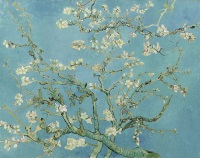
Van Gogh Museum
The Van Gogh Museum is a definitive tourist attraction in Amsterdam. Situated in a modern building, the simple architecture subtly underscores the artist's colourful and extraordin…
Van Gogh Museum
The Van Gogh Museum is a definitive tourist attraction in Amsterdam. Situated in a modern building, the simple architecture subtly underscores the artist's colourful and extraordinary work. The museum houses the largest collection of Van Gogh's work in the world, comprising more than 200 paintings, 437 drawings and 31 prints. Many of his most famous and recognisable paintings are on display.
The collection is organised according to three criteria. The first of these is the artist's work, which is divided into five notable periods. Then there is the display of other artists' work, including pieces from his friends and contemporaries. Finally, the third section showcases the museum's history.
The written information provided is good and sufficient for many visitors, but the audio guide is definitely worth hiring for Van Gogh fanatics who want a more in-depth analysis. Photography of the art itself is not permitted, though visitors can take pictures in the main hall. Large bags will have to be left in the cloakroom facilities as they are not permitted in the museum.
Website www.vangoghmuseum.nl
The Rijksmuseum
The Rijksmuseum opened in 1885 and is best known for its collection of 17th-century Dutch Masters, such as Vermeer, Hals and Steen. The most notable of these paintings is Rembrandt…
The Rijksmuseum
The Rijksmuseum opened in 1885 and is best known for its collection of 17th-century Dutch Masters, such as Vermeer, Hals and Steen. The most notable of these paintings is Rembrandt's masterpiece The Night Watch, which has pride of place. The museum contains thousands of other paintings spanning from the Middle Ages to the 20th century, which include its Asiatic collection, Print Room, Dutch History and Applied Arts sections. There are also stunning furniture displays, jewellery and other artefacts, with a map or audio tour helping to navigate the extensive collection. Visitors should allow at least a few hours to explore thoroughly.
Website www.rijksmuseum.nl
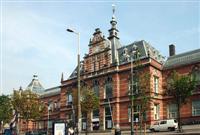
Stedelijk Museum of Modern Art
The Stedelijk Museum of Modern Art showcases the most impressive modern art collection in Amsterdam. Its permanent exhibition focuses on De Stijl, Cobra, Nouveau Realisme, Pop Art,…
Stedelijk Museum of Modern Art
The Stedelijk Museum of Modern Art showcases the most impressive modern art collection in Amsterdam. Its permanent exhibition focuses on De Stijl, Cobra, Nouveau Realisme, Pop Art, Color Field Painting, Zero and Minimalist Art, with many pieces by masters such as Cezanne, Picasso and Warhol. Temporary exhibitions on design and applied art are housed in the new wing, and there are also many workshops and book launches. There's a shop, a library and a restaurant on the premises too. Audio guides are available in six languages, and free guided tours take place weekly. They're conducted in Dutch and English and cannot be booked in advance.
Website www.stedelijk.nl/en
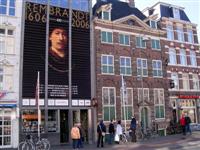
Rembrandt House
The Rembrandt Museum provides insight into the life of the famous Dutch master, who lived in this house between 1639 and 1658. Rembrandt went bankrupt in 1656 and a list of his pos…
Rembrandt House
The Rembrandt Museum provides insight into the life of the famous Dutch master, who lived in this house between 1639 and 1658. Rembrandt went bankrupt in 1656 and a list of his possessions was drawn up to pay his debts, allowing historians to faithfully restore the house with exactly the kinds of furnishings the artist owned. Visitors can view a permanent collection of paintings done by Rembrandt's teacher, Pieter Lastman, as well as some pieces completed by his pupils. The painting studio holds daily demonstrations on how etchings and paintings were made in the 17th century, including an interesting demonstration on Rembrandt's use of colour.
Website www.rembrandthuis.nl
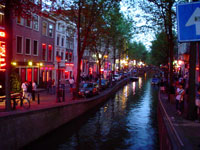
Red Light District (De Wallen)
The sex workers in De Wallen are part of a legal and regulated industry, meaning compulsory health checks and taxable income. There's also attractive architecture in the Red Light …
Red Light District (De Wallen)
The sex workers in De Wallen are part of a legal and regulated industry, meaning compulsory health checks and taxable income. There's also attractive architecture in the Red Light District, dating back to the Middle Ages, while both the City Hall and Muziek Theatre are located in Waterlooplein. Nieuwmarkt Square was once home to a thriving community of mainly Portuguese Jews, having fled the Spanish Inquisition, while the culturally diverse Zeedijk Street is often referred to as Chinatown. Visitors should be respectful and recognise that photography in and around the actual brothels is frowned upon and could lead to confrontation.
The Dutch Resistance Museum (Verzetsmuseum)
Nazi Germany occupied the Netherlands between May 1940 and May 1945, and the museum covers how the invasion affected the Dutch population's everyday lives, as well as the resistanc…
The Dutch Resistance Museum (Verzetsmuseum)
Nazi Germany occupied the Netherlands between May 1940 and May 1945, and the museum covers how the invasion affected the Dutch population's everyday lives, as well as the resistance. Visitors will learn details about the movement's extraordinary espionage activities, and view its maps, photographs, weaponry and false documents. The permanent exhibition is bilingual, catering to both Dutch and English visitors, and there are free audio guides available in English, German, French, Spanish and Dutch. Guided tours are available by appointment only and reservations must be made a few weeks in advance.
Website www.verzetsmuseum.org
Keukenhof
Keukenhof is one of the country's top spring-time attractions and a photographer's dream. The huge garden is home to millions of tulips, daffodils and hyacinths, and is a sea of co…
Keukenhof
Keukenhof is one of the country's top spring-time attractions and a photographer's dream. The huge garden is home to millions of tulips, daffodils and hyacinths, and is a sea of colour and fragrance. Visitors will also see many works of art scattered among the blooms in this creatively-designed site. They can stop for refreshments at one of the area's many cafes and restaurants, and shop at stalls selling seeds, souvenirs and gardening equipment. There are demonstrations on flower arranging and the latest trends in gardening, as well as boat and cycling tours.
Website www.keukenhof.nl
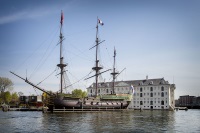
National Maritime Museum
Het Scheepvaartmuseum gives visitors a glimpse into the country's seafaring past. The exhibit covers four centuries of history and includes paintings, ship models, antiquarian maps…
National Maritime Museum
Het Scheepvaartmuseum gives visitors a glimpse into the country's seafaring past. The exhibit covers four centuries of history and includes paintings, ship models, antiquarian maps and navigation instruments, creating one of the world's most extensive collections of maritime memorabilia. Visitors will learn about whaling, naval combat and the maritime trade in the Netherlands, as well as its journeys to places such as modern-day India, South Africa and Indonesia. They can even explore a life-size reconstruction of a Dutch East India Company ship. The exhibition on the slave trade may not be suitable for children, though other displays are dedicated to younger age groups and include fun, interactive activities.
Website www.hetscheepvaartmuseum.nl/
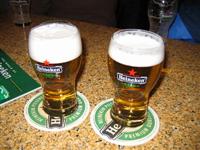
Heineken Experience
As one of the most popular tourist attractions in the Netherlands, the Heineken Experience is not to be missed. Housed in the original brewery, guests will learn about the Heineken…
Heineken Experience
As one of the most popular tourist attractions in the Netherlands, the Heineken Experience is not to be missed. Housed in the original brewery, guests will learn about the Heineken Company's history and its unique process, visit cutting-edge interactive exhibits and enjoy free beer at two pit stops along the way. Visitors will also take a gift of Heineken memorabilia home with them. The site's layout is impressive and the tour unfolds in a sophisticated manner, meaning its appeal extends beyond the interest of beer lovers. Travellers can avoid queues and potentially pay reduced ticket prices by booking online.
Website www.heinekenexperience.com
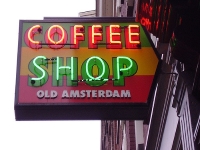
Amsterdam Coffeeshops
Coffeeshops are one of Amsterdam's most iconic features, openly selling cannabis and welcoming their patrons to smoke it on the premises. 'Cafes', on the other hand, sell cakes, te…
Amsterdam Coffeeshops
Coffeeshops are one of Amsterdam's most iconic features, openly selling cannabis and welcoming their patrons to smoke it on the premises. 'Cafes', on the other hand, sell cakes, tea and coffee. Coffeeshops range from the laid-back and mellow to the loud and psychedelic. The expectation is that customers will consume a snack or beverage along with whatever they order off the hash menu. Staff can give advice on the different strains and strengths. Regarding regulations, coffeeshops can only carry controlled amounts of marijuana for sale to adults over the age of 18. The substance is also illegal in the Netherlands, with recreational use simply tolerated if it isn't socially disruptive.
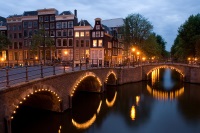
Amsterdam Canal Tour
Amsterdam's canal tours are an essential experience for visitors. The UNESCO-listed features were crucial to the city's transport and defensive strategies in the 17th century but a…
Amsterdam Canal Tour
Amsterdam's canal tours are an essential experience for visitors. The UNESCO-listed features were crucial to the city's transport and defensive strategies in the 17th century but are now a pleasing way to appreciate the historic and picturesque destination. Tourists who are interested in tours have two main options: the large, glass-topped canal boats accommodate hundreds of passengers and travel along predetermined routes; while the more personal and traditional tuindersvletten boats, which used to carry animals and vegetables around Amsterdam, hold 10 people per tour. Tuindersvletten boats can navigate the tiniest canals and fit under the city's lowest bridges.


